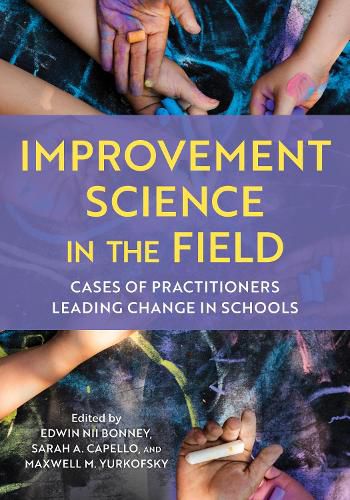Improvement Science in the Field

Improvement Science in the Field
Since Bryk et al. (2015) published their groundbreaking book on how educational stakeholders can take up improvement science as an approach to systematically and collaboratively addressing problems in education, there have been at least ten books on improvement science and counting. Scholars have authored books laying out a step-by-step approach to using improvement science in education (Crow, Hinnant-Crawford, Spaulding, 2019; Hinnant-Crawford, 2020); books on how to teach improvement science to practitioners (Spaulding, Crow, Hinnant-Crawford, 2021); and books on how to evaluate continuous improvement efforts (Christie, Inkelas & Lemire, 2017; Rohanna, 2021). Many of the books published on improvement science have been largely conceptual/theoretical and pedagogical about how to undertake improvement science in education. While many books have been instructive, theoretical, and conceptual for higher education institutions graduate programs, faculty, students, and educational leaders (Bryk, 2021; Perry, Zambo & Crow, 2020, Peurach et al., 2022), the voice of the practitioner is seldom heard in how they are actively taking up improvement science to lead change in their school settings. Bryk (2021) also presents large-scale efforts that benefit from lots of funding which many practitioners, unfortunately, do not have available. Our aim is to holistically and specifically present the practitioner's voice, their uptake of improvement science, and how they use the tools to lead to educational change.
The books that have centered the practitioner's voice have provided few details describing the entire arc of the improvement cycle including their challenges, questions, reflections, and successes in using improvement science in their settings (eg. Peterson & Carlile, 2021). Although the book provides some practitioner perspectives, they are also eclipsed by the perspectives and voices of academics, researchers and higher education faculty such that we don't fully know how practitioners are making sense of improvement science as a tool for educational change. The current works have been essential in advancing improvement science as a signature pedagogy for higher education institutions and as an approach for improving schools. However, in order to support and spread the theoretical and conceptual underpinning of improvement science in education (Lewis, 2015), it is even more crucial to hear from practitioners themselves at this time, rather than academics/university professors and researchers, and how they are grappling with and employing with improvement science as a tool.
Our goal in this book is to share how practitioners are making sense of and are using improvement science to lead to actual educational change. This book, therefore, shifts from previous books to highlight the work and voice of practitioners using improvement science in their own settings. The book is divided into two parts. The first part presents real problems of practice authored by practitioners leading continuous improvement efforts that address the disproportionate discipline of Black students, increasing enrolling of Black and Latinx students in gifted programs, teacher stress and mental health amidst COVID-19 and the aftermath, closing the achievement gap, and creating a welcoming and collaborative school district. These cases will inform how we answer pertinent questions about challenges practitioners might face in the field while undertaking continuous improvement efforts. The questions are important to answer as stakeholders in education may be divided in the current political climate on how to address problems of practice in schools. While the first part of the book presents cases of practitioners that have gone through a full cycle of improvement, the second part of the book follows a tradition of case-based teaching where authors only provide part of their journey of improvement in order to invite readers to practice, discuss, brainstorm, and reflect on how they will address the problem presented. Therefore the second part of the book also presents multiple practice cases, authored by practitioners that are based on real problems of practice. The case narrative provides enough detail about a problem of practice including relevant contextual information, secondary data, and data from empathy interviews. Readers, students, and groups will be invited to explore and discuss the next steps to addressing the problem using tools of improvement science.
The book will include diagrams and illustrations such as process maps, system maps, fishbone diagrams, PDSA cycle charts, driver diagrams, etc. These illustrations and diagrams are helpful ways of capturing succinctly how contributors/educational leaders inquired into, thought about, and addressed their problems of practice. It would also provide templates for readers to adopt/adapt to their own continuous improvement activities and efforts.
-The first - and only - resource on continuous improvement in schools that puts practitioners front and center
-Covers improvement methods, theory, research, illuminated by real cases with practical improvement tools that can be adapted to any setting.
This item is not currently in-stock. It can be ordered online and is expected to ship in approx 2 weeks
Our stock data is updated periodically, and availability may change throughout the day for in-demand items. Please call the relevant shop for the most current stock information. Prices are subject to change without notice.
Sign in or become a Readings Member to add this title to a wishlist.


